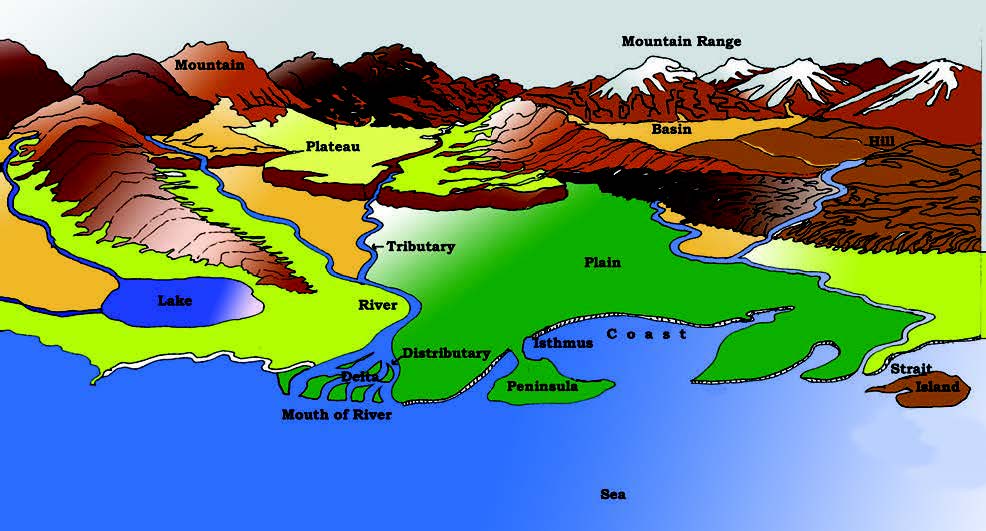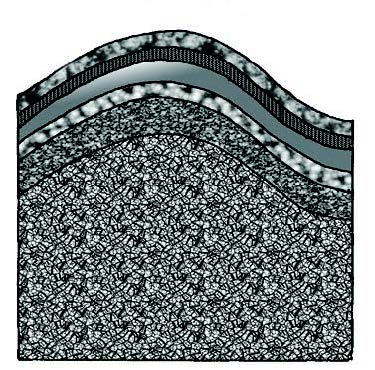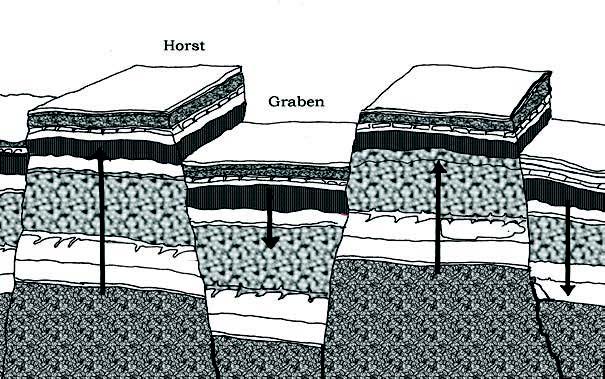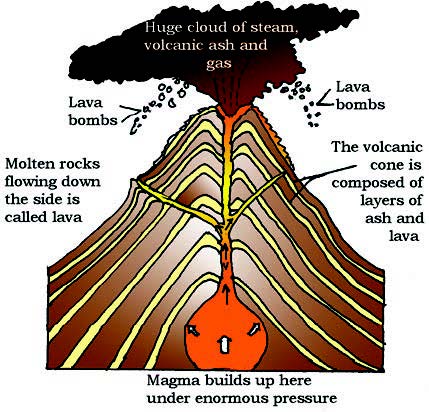Class 6 Geography Major Landforms of the Earth chapter 6 notes NCERT Solution in Hindi. NCERT Class 6 Geography Notes, Textual Question Answer and Important Question Answer also Available for Various Board Students like HBSE, CBSE, UP board, Mp Board, RBSE and some other State Boards.
Also Read:- Class 6 Geography NCERT Solution
NCERT Solution for Class 6 Geography Chapter 6 Major Landforms of the Earth Notes for students.
Major Landforms of the Earth Class 6 Geography Chapter 6 Notes
Broadly, we can group different landforms depending on elevation and slope as mountains, plateaus and plains.

1. Mountains :- A steep hill with an elevation of more than 600 metres is termed as a mountain. In some mountains, there are permanently frozen rivers of ice. They are called glaciers. Mountains may be arranged in a line known as range. Some of important ranges are as :- The Himalayas in Asia, The Alps in Europe and the Andes in South America.

Types of Mountains :-
There are three types of Mountains as-
(i) Fold Mountains – The Himalayan Mountains and the Alps are young fold mountains. The Aravalli range in India is one of the oldest fold mountain systems in the world.

(ii) Block Mountains :- These are created when large areas are broken and displaced vertically. The uplifted blocks are termed as Horsts while lowered blocks as Graben. eg- Rhine valley and Vosges mountain in Europe.

(iii) Volcanic Mountains :- These are formed due to volcanic activities. eg – Mt. Kilimanjaro in Africa, Mt. Fujiyama in Japan.

Uses of Mountains :-
(i) Mountains are storehouse of water.
(ii) Mountains have a rich variety of flora and fauna.
(iii) Mountains provide an idyllic site for tourists. Several sports like paragliding, hang gliding, river rafting and skiing are popular in the mountains.
2. Plateaus :- A plateau is an elevated flat land. It is a flat topped table land standing above the surrounding area. The Deccan plateau in India is one of the oldest plateaus. The East African Plateau in Kenya, Tanzania and Uganda and the Western Plateau of Australia are other examples. The Tibet Plateau is the highest plateau in the world (4000m to 6000m).
Plateaus are rich in mineral deposits. As a result many mining areas in the world are located in the Plateaus areas. Gold and diamond mining in African Plateau. In India huge reserves of iron coal and manganese are found in the Chhotanagpur Plateau. The lava plateaus are rich in black soil that are fertile and good for cultivation. Some waterfalls on plateaus are as -Hundru falls in Chhotanagpur Plateau and Jog falls in Karnataka.
3. Plains :- Plains are large stretch of flat lands. Most of the plains are formed by rivers and their tributaries. Generally, Plains are very fertile. These are very thickly populated regions of the world. In Asia, Plains are formed by the Ganga and the Brahmaputra in India and the Yangtze in China.
Formation of Plains :- Most of the plains are formed by the rivers and their tributaries. The rivers flow down the slopes of mountains and erode them. They carry forward the eroded material. Then they deposit their load consisting of stones, sand and slit along their courses and in their valleys. It is from these deposits that plains are formed.